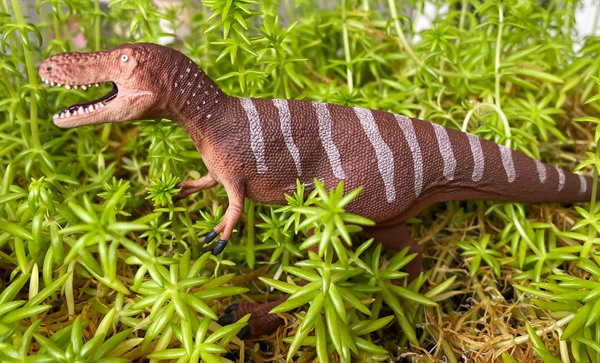A new scientific paper published this week postulated that Nanotyrannus (N. lancensis) is a valid taxon. The study was published in the journal “Fossil Studies”. Several lines of scientific enquiry were explored, and the researchers concluded the fossil material ascribed to Nanotyrannus probably did not represent examples of juvenile T. rex.
One of the authors of the study is Dr Nicholas Longrich of the University of Bath. The other author is fellow palaeontologist Dr Evan Saitta, a PhD graduate of the University of Bristol and a postdoctoral researcher at the University of Chicago.
Everything Dinosaur team members created a short video to highlight this research.
Video credit: Everything Dinosaur
To visit the Everything Dinosaur YouTube channel: Everything Dinosaur on YouTube (Please Subscribe).
Nanotyrannus Models
The debate surrounding the validity of Nanotyrannus is likely to continue. Indeed, this taxon has attracted controversy ever since it was first formally erected in 1946 (Gilmore). However, model manufacturers have produced Nanotyrannus figures. For example, in 2021 PNSO introduced “Logan the Nanotyrannus” and Safari Ltd have made a Dino Dana Nanotyrannus (see below).
Dinosaur fans and model collectors can discuss the validity of this taxon and perhaps these tyrannosaurs can do battle with other tyrannosaur figures animals such as Tarbosaurus and of course Tyrannosaurus rex.
To view the range of Safari Ltd prehistoric animal models including Dino Dana figures: Safari Ltd. Wild Safari Prehistoric World.
T. rex Ontogeny
More than twenty Tyrannosaurus rex specimens have been described. Palaeontologists are aware that this dinosaur changed its body plan dramatically as it grew and matured. A juvenile T. rex had a proportionately much smaller head, a slender neck and longer legs than the adults. This change in body shape is so dramatic that in all likelihood, juveniles behaved very differently than mature animals. They also probably hunted in different ways.
It is as if adult and juvenile T. rex were different species. If this is the case, then juveniles occupied a very different niche in the ecosystem compared to the fully-grown tyrannosaurs. This helps to explain the confusion over the taxonomy of all the tyrannosaur specimens currently assigned to Nanotyrannus lancensis/Tyrannosaurus rex.
The scientific paper: “Taxonomic Status of Nanotyrannus lancensis (Dinosauria: Tyrannosauroidea) — A Distinct Taxon of Small-Bodied Tyrannosaur” by Nicholas R. Longrich and Evan T. Saitta published in Fossil Studies.
Visit the Everything Dinosaur website: Everything Dinosaur.







Leave A Comment